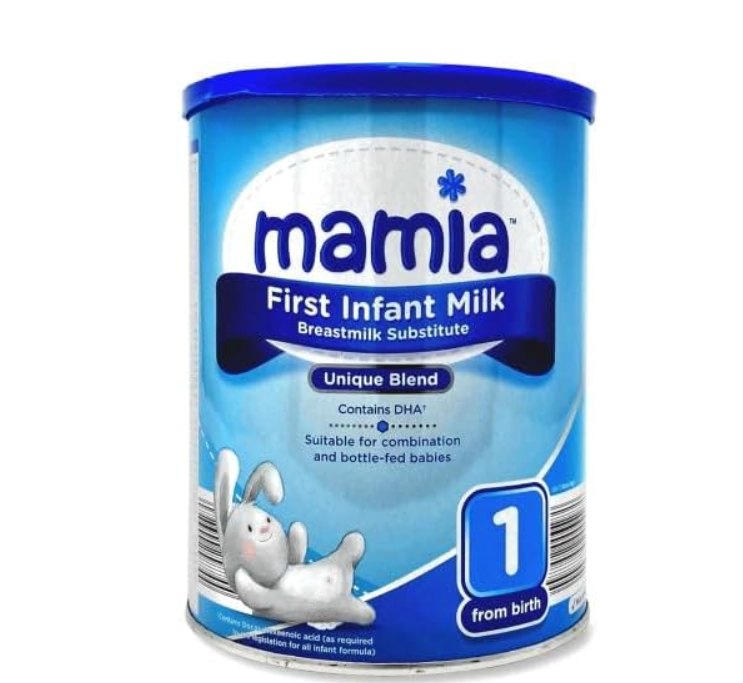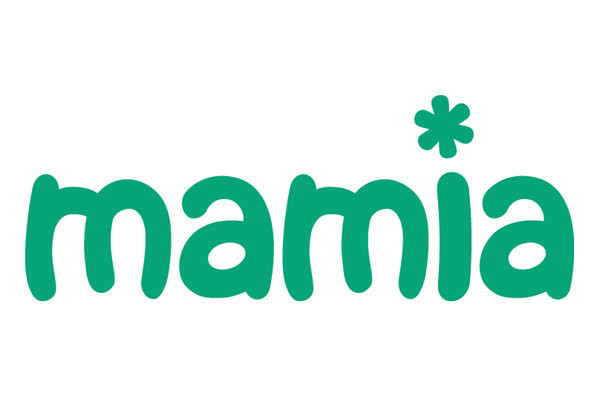
Mamia First Infant Milk Tin 900g
- Unique Blend: Contains DHA. Suitable for combination and bottle-fed babies.
- Our Mamia range of milks have been developed for your newborn through to toddler.
Navigating the World of Baby Nutrition: A Parent’s Journey Through Mamia Formula
As a new parent, the world of baby nutrition can seem like a daunting maze. With countless options lining the shelves, how do you choose the best for your precious little one? Enter Mamia Formula – a popular choice that’s been gaining traction among discerning parents. But what makes it stand out? Is it the right choice for your baby? Let’s dive into the nitty-gritty of Mamia Formula and unravel the mystery together.
The Essence of Mamia: What’s in the Tin?
First things first, let’s talk ingredients. Mamia Formula is crafted with a blend of essential nutrients designed to mimic breast milk as closely as possible. It contains a carefully balanced mix of proteins, carbohydrates, fats, vitamins, and minerals. The protein source is typically a combination of whey and casein, which are easily digestible for most babies.
But it’s not just about the basics. Mamia Formula also includes:
- DHA (Docosahexaenoic acid) – an omega-3 fatty acid crucial for brain and eye development
- ARA (Arachidonic acid) – another fatty acid important for overall growth
- Prebiotics – to support a healthy gut microbiome
- Nucleotides – to aid in immune system development
It’s worth noting that Mamia Formula is not organic. However, this doesn’t mean it’s any less nutritious. The formula meets strict quality standards and nutritional guidelines set by regulatory bodies.
From Tin to Tummy: Preparing Mamia Formula
Now, let’s get practical. How do you prepare this magical powder for your hungry munchkin? It’s simpler than you might think:
- Wash your hands thoroughly (cleanliness is key!)
- Sterilize all equipment – bottles, teats, and caps
- Boil fresh water and let it cool for about 30 minutes (until it’s lukewarm)
- Pour the exact amount of water into the bottle
- Add the correct number of scoops of powder (level, not heaped)
- Shake well until all powder is dissolved
- Test the temperature on your wrist before feeding
Remember, always follow the instructions on the packaging. The right water-to-powder ratio is crucial for your baby’s nutrition and digestion.
The Mamia Experience: What Parents Are Saying
Let’s face it – nothing speaks louder than real experiences. So, what are parents saying about Mamia Formula? The reviews are predominantly positive. Many parents praise its affordability without compromising on quality. Some have noted that their babies seem to digest it well, with less fussiness and gas compared to other brands.
One mom, Sarah, shared: “We switched to Mamia when our little one was 3 months old. The transition was smooth, and we noticed less spit-up. Plus, it’s gentler on our wallet!”
However, as with any product, experiences can vary. Some parents have reported that their babies didn’t take to the taste immediately. It’s always wise to consult with your pediatrician before making any significant changes to your baby’s diet.
Mamia for Newborns: A Safe Start?
A common question among new parents is whether Mamia Formula is suitable for newborns. The answer is yes – Mamia offers a Stage 1 formula specifically designed for babies from birth to 6 months. This formula is tailored to meet the unique nutritional needs of newborns, with a protein profile that’s easy on their developing digestive systems.
However, it’s important to note that breast milk is still considered the gold standard for infant nutrition. If you’re able to breastfeed, it’s recommended to do so exclusively for the first 6 months. If breastfeeding isn’t possible or you choose to supplement, Mamia Formula can be a reliable alternative.
Mamia vs. The Rest: How Does It Stack Up?
In the world of baby formula, competition is fierce. So how does Mamia Formula compare to other brands? Let’s break it down:
- Nutritional Content: Mamia holds its own against premium brands, offering a comparable nutrient profile.
- Price: This is where Mamia really shines. It’s significantly more affordable than many leading brands without compromising on quality.
- Availability: Mamia is readily available in Aldi stores and online, making it convenient for most parents.
- Range: While Mamia offers formulas for different stages, some premium brands may have a wider range of specialized formulas.
Remember, the “best” formula is the one that works for your baby and fits your family’s needs and budget.
The Mamia Advantage: Benefits Worth Noting
So, why are parents choosing Mamia Formula? Here are some key benefits:
- Nutritionally Complete: Mamia provides all the essential nutrients your baby needs for healthy growth and development.
- Cost-Effective: It offers premium-quality nutrition at a more affordable price point.
- Easy to Digest: Many parents report that their babies tolerate Mamia well, with less fussiness and digestive issues.
- Consistent Quality: Mamia adheres to strict quality control measures, ensuring a reliable product every time.
- Stage-Specific Formulas: From newborns to toddlers, Mamia offers age-appropriate formulations.
Allergy Concerns: What You Need to Know
Allergies are a common concern for parents, and rightfully so. While Mamia Formula is generally well-tolerated, it’s not hypoallergenic. It contains cow’s milk protein, which can be an allergen for some babies. If your little one has a diagnosed milk allergy or severe lactose intolerance, you’ll need to look for specialized formulas.
Common signs of a formula allergy include:
- Excessive fussiness or crying, especially after feeding
- Vomiting
- Diarrhea
- Blood or mucus in stool
- Rash or hives
If you notice any of these symptoms, consult your pediatrician immediately. They may recommend switching to a hypoallergenic or specialized formula.
The Price Tag: Balancing Quality and Affordability
Let’s talk money. One of the most attractive features of Mamia Formula is its price point. It’s significantly more affordable than many premium brands, often costing 30-50% less. The exact price can vary depending on the stage and size of the tin, but generally, you can expect to pay around $15-$20 for a 900g tin.
This affordability doesn’t come at the cost of quality. Mamia meets the same nutritional standards as more expensive brands, making it an attractive option for budget-conscious parents who don’t want to compromise on their baby’s nutrition.
Feeding Schedule: How Often and How Much?
Every baby is unique, and feeding patterns can vary. However, here’s a general guide for formula feeding:
- Newborns: Every 2-3 hours, about 1-3 ounces per feeding
- 1-2 months: Every 3-4 hours, about 4-5 ounces per feeding
- 2-6 months: Every 4-5 hours, about 4-6 ounces per feeding
Remember, these are just guidelines. Always feed your baby on demand and consult with your pediatrician for personalized advice.
Storing Mamia: Keeping It Fresh and Safe
Proper storage is crucial for maintaining the quality and safety of Mamia Formula. Here are some tips:
- Store unopened tins in a cool, dry place.
- Once opened, use the formula within one month.
- Always keep the scoop inside the tin to avoid contamination.
- Seal the tin tightly after each use.
- Never store mixed formula – always prepare fresh for each feeding.
Transitioning to Mamia: A Smooth Move
If you’re considering switching to Mamia Formula, it’s best to do so gradually. Here’s a suggested transition plan:
- Day 1-2: 3/4 current formula, 1/4 Mamia
- Day 3-4: 1/2 current formula, 1/2 Mamia
- Day 5-6: 1/4 current formula, 3/4 Mamia
- Day 7: Full Mamia
This gradual approach helps your baby’s digestive system adjust to the new formula. If you notice any issues during the transition, slow down the process or consult your pediatrician.
Safety First: Recalls and Quality Control
As of my last update in April 2024, there have been no recalls on Mamia Formula. Aldi, the company behind Mamia, has strict quality control measures in place. However, it’s always a good idea to stay informed. You can check for any updates or recalls on the FDA website or Aldi’s official channels.
The Verdict: Is Mamia Formula Right for Your Baby?
At the end of the day, the choice of formula is a personal one. Mamia Formula offers a compelling combination of quality nutrition and affordability. It’s suitable for most babies, from newborns to toddlers, and has garnered positive reviews from many parents.
However, every baby is unique. What works for one may not work for another. It’s always best to consult with your pediatrician before making any significant changes to your baby’s diet. They can provide personalized advice based on your baby’s specific needs and health status.
Remember, fed is best. Whether you choose Mamia Formula, another brand, or breastfeed, what matters most is that your baby is getting the nutrition they need to grow and thrive.
Parenthood is a journey filled with countless decisions. Choosing the right formula is just one of many. Trust your instincts, do your research, and don’t hesitate to seek professional advice when needed. You’re doing great, and your little one is lucky to have such a caring parent looking out for their best interests.





